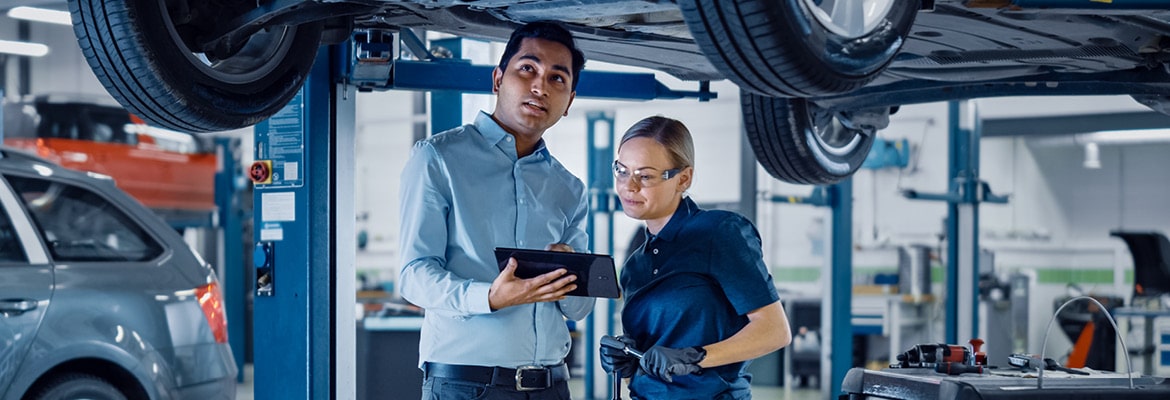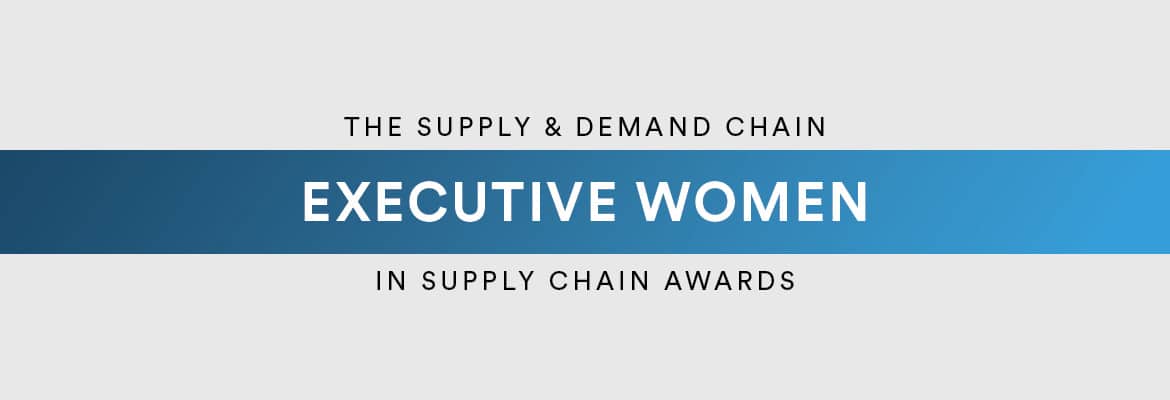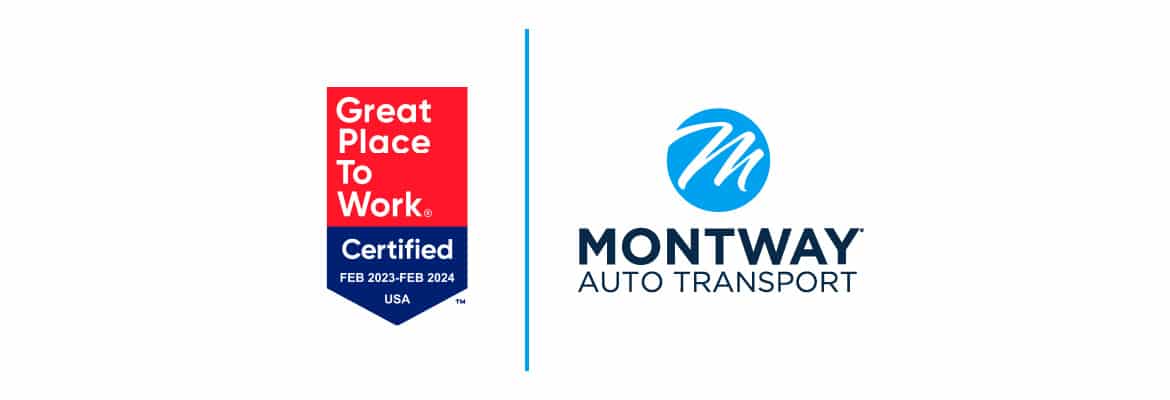Author(s)
The automotive industry, a powerhouse of innovation and economic growth, is navigating some significant speed bumps on its recruitment highway. According to Wizehire, there will be a global shortage of 2.3 million skilled workers in the automotive sector by 2025, escalating to a staggering 4.3 million by 2035.
As tech innovations ramp up, an aging workforce phases into retirement and the demand for more specialized skills increases, the automotive industry is seeing a recruitment landscape like never before. This requires a new set of strategies to attract and retain talent.
Top jobs in the automotive industry
The automotive sector is moving towards more innovative production and sales strategies, opening new specialized roles throughout the industry. In dealerships, UX managers and eCommerce sales managers are in high demand to focus on a virtual customer experience. Meanwhile, auto engineers are needed in the manufacturing process to design and implement technical systems in vehicles. The most in-demand careers within the automotive industry include:
- Automotive engineer
- Automotive technician
- Auction vehicle condition inspector
- Dealership UX manager
- eCommerce sales manager
- Paint technician
- Auction mechanic
- Lot manager
- Academic auto instructor
- Car detailer
- Car rental agent
- Auto electrician
- Auto designers
- Auto sales manager
- Car salesperson
- Auto auction driver
Automotive recruitment challenges
Aging workforce
With an aging workforce, automotive industry recruiters grapple to find, hire and retain younger employees. Zippia reports that the average age of automotive production workers is over 40 years old, representing nearly half of that population.
As younger generations enter the workforce, they are pursuing opportunities in industries like technology, healthcare and finance. This leaves significant gaps in automotive and requires recruiters to be creative in pursuing younger workers.
Talent shortage
Employers in the automotive industry face a talent shortage that spans all levels of seniority, affecting the entire sector, including automotive sales and remarketing, trucking and rental car companies.
Many recruiters find it challenging to hire workers for positions that now require knowledge of the latest technologies. A report published by Manpower Group indicates that 69% of automotive employers find it difficult to fill available positions due to a lack of talent that possesses the appropriate technical skills.
Demand for automotive technicians
Supply chain bottlenecks, high interest rates and increased vehicle costs have led to aging vehicles on the road reaching an average age high of 12.5 years in 2023. This has created a demand for technicians to maintain these older vehicles. As consumers are holding onto their cars for longer, the automotive industry will need to hire as many as 100,000 technicians through 2026 to keep up with mechanical and collision repairs and maintenance. Notably, the technician shortage isn’t just impacting dealerships and repair shops, but spans into all sectors, including automotive auctions and manufacturers. Placement rates for graduates of automotive mechanical and collision repair programs are at record levels with demand exceeding supply.
In addition, as new vehicles become more technologically advanced, finding skilled technicians with the ability to repair and maintain them remains a challenge for recruiters. According to the Bureau of Labor Statistics, over 80,0000 electricians will be needed to service EVs and install chargers.
Strategies for recruitment in 2024
Upskill talent
With more tech-forward work models, upskilling current talent is an effective strategy for retaining workers. However, according to a report, less than two in five automotive industry recruiters have effective upskilling or reskilling programs to prepare talent or move employees into new areas. Implementing programs such as on-the-job training, classroom learning and mentorship opportunities are great first steps.
Implement technology
Many automotive roles require manual labor, but implementing the right technology can automate various tasks. This can enhance overall employee satisfaction by reducing the need for workers to take on additional responsibility. For example, to help dealerships move vehicles, the Montway Automation Portal (M.A.P.), reduces the time car dealerships spend on manual tasks, like uploading VINs and contacting carriers for status updates, giving them more time to focus on revenue generation and the overall customer experience.
In addition, training your team to use tools like AI damage inspections can reduce the amount of time it takes to inspect a vehicle while reducing human error. This is particularly helpful for carriers moving vehicles and dealerships that obtain used inventory from auctions.
It’s not just automotive logistics that can benefit from technology. The use of HR technology can help recruiters search for and retain workers. This can include applicant tracking systems, AI-powered talent sourcing tools and platforms that facilitate virtual interviews and onboarding processes. Technology can also be used to create integrated skills development programs that ensure talent retention and drive business success in the long term. Attract the younger generation.
Attracting the younger generation is a step recruiters can take by recognizing the need for fresh perspectives and innovative thinking. This can be achieved by showcasing purpose-driven work. For example, Gen Z, in particular, seeks power, achievement and stimulation in their day-to-day employment, according to a study by Deloitte.
Another approach is to partner with trade schools and offer apprenticeship programs to provide practical experiences and a clear pathway into the industry. By providing hands-on experience, younger workers may be more interested in how a job makes them feel rather than the pay and benefits associated with the opportunity.
Promote a positive work culture
The automotive industry is recognizing the need for a positive work culture to retain top talent. A key strategy is to offer a working environment that fosters employee well-being and satisfaction. Providing employees with competitive compensation and benefits is also a strategy the industry can take to attract workers. To address this, recruiters can find innovative ways to ensure that their employees are motivated by sales and commission and feel valued and respected.
Moving ahead
The recruitment landscape is continuously evolving and influenced by technological advancements and demand for specialized talent. Upskilling current staff, attracting younger workers, promoting a positive work culture and implementing technology to improve employee jobs are strategies to overcome these challenges. As the sector continues to innovate, it will require a workforce that’s agile, skilled and diverse to drive future growth and success.

About Montway Auto Transport
Fostering an employee-first work environment drives Montway’s success, making us one of the nation’s leading automotive logistics providers. With over 16 years of experience and an expansive carrier network of over 30,000, Montway can facilitate auto transport across all 50 states. Call 888-998-4161 or visit Montway.com/Logistics to learn more.








